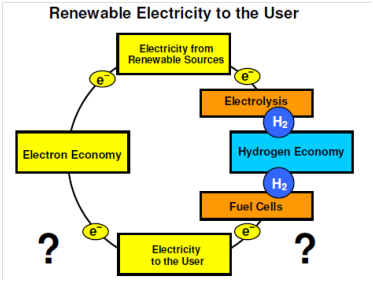Energy security rests on two principles:
- To secure access to all sources of energy involving coal, oil and gas supplies within the country and worldwide, till the end of the fossil fuel era that is fast approaching. Concurrently we should access technologies to give a diverse supply of reliable, environmentally and affordable sustainable energy.
- To use the least amount of energy to give services and cut down energy losses.
We required to be energy secure in terms of energy resource, that is where it comes from, control of the flow and distribution of the resource, and should have alternatives in place to permit us to withstand the highs and lows related with any commodity. Since 1985, our country has been a net importer of coal. It has been unable to raise oil production substantially in the past few decades. Rising oil demand of close to 10% per year has led to sizeable oil import bills. The dependence of energy imports is projected to increase in the future. This energy import dependence implies vulnerability to external price shocks and supply fluctuations that threaten the energy security of the country.
Increasing dependence on oil imports means reliance on imports from the Middle-East, a region susceptible to disturbances and consequent disruptions of oil supplies. This calls for diversification of sources of oil imports. The requirement to deal along with oil price fluctuations also necessitates measures to be taken to reduce the oil dependence of the economy, possibly by fiscal measures to reduce demand, and through developing alternatives to oil, like as natural gas and renewable energy.
Here will continue to experience an energy supply shortfall in the foreseeable future unless adequate measures are taken forthwith. Energy security could only be ensured through a shift in the structure of energy sources. We would require minimizing fossil fuel imports and assuring secure access to energy resources.
Some of the strategies which could be used to meet the future challenges associated to our energy security are:
- building stockpiles;
- Diversification of energy fuel sources;
- increased capacity of fuel switching;
- demand restraint;
- Development of renewable energy sources;
- improving energy efficiency; and
- Sustainable development.
While all these options are feasible, their implementation will take time. Also, for countries, reliance on stockpiles would tend to be slow because of resource constraints. Besides, the market is not sophisticated sufficient or the monitoring agencies experienced enough to predict the supply situation in time to take essential action. Insufficient storage capacity is another cause for worry and requires to be augmented, if world has to increase its energy stockpile.
We should tap the hydro and nuclear power potential to the maximum. In addition, targets for power produced through renewable energy technologies might be raised to 20 or 25% against the present 5%. DG (Distributed Generation) Technology is the latest concept for meeting local requirement along with local resources at the remotest location with clean form of energy. Micro-hydro, biomass, solar energy, are some of the resources used for DG.
These measures would also lead to sustainable energy use in future.
As we near the end of that unit, you may like to know: What are the future energy options available to us for ensuring energy security and sustainable use of energy? We have two major options for the delivery of sustainable energy to the consumer:
♦ The favoured and more convenient option is to managed the chemical energy base. This would mean replacing fossil fuels through synthetic hydrogen and continuing the energy business as common. In this scenario, oil companies would become hydrogen suppliers, roadside fuelling stations would pump hydrogen instead of gasoline, and cars would be powered through hydrogen and fuel cells. This option, termed "hydrogen economy", could certainly be realized. The essential technology is available or could be developed in time.
♦ The second option is a controlled transition from the chemical energy base to an electrical energy base. Renewable energy could be brought to the people in the form of electricity. The essential technology is also available or could be developed rapidly. This option, termed an "electron economy", could certainly be realized.
Both these options deliver renewable electricity to the people, but by various energy carriers and needs additional research and development. New storage technologies are required for hydrogen as well as for electrons. But a hydrogen infrastructure must be built from scratch. In easy terms, a "hydrogen economy" has to compete along with an "electron economy". The option with the lower energy losses among energy source and energy services would be preferred. This situation is described in Figure. The competition between hydrogen and electricity will be determined by the respective overall energy efficiency among renewable source and end-use.

Figure: Energy Distribution Options in a Sustainable Energy Future
Therefore, of all these options, the simplest and the most simply attainable are reducing demand by persistent energy conservation efforts. In the light of the discussion so far, we could outline an energy strategy for the future with immediate, medium-term and long-term goals.